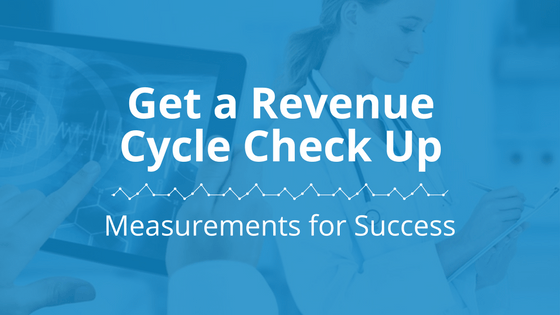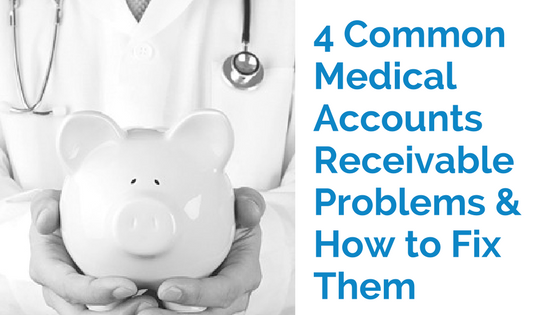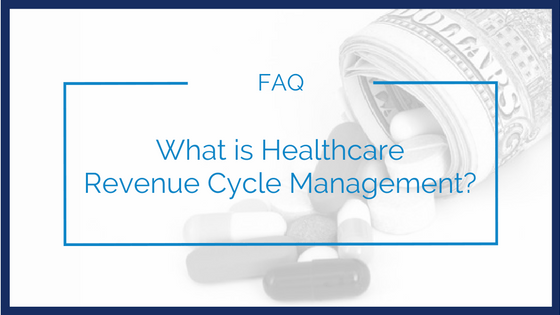healthcare revenue cycle management

New year, new name! We are proud to welcome you to the future of healthcare revenue cycle management – welcome to Meduit! Please allow us to reintroduce ourselves.
What is Meduit?
Our team is now comprised of today’s top RCM companies – MedA/Rx and Receivables Management Partners (RMP) – which work together to leverage their unique strengths across the entire revenue cycle. With Meduit at the center we have collaborated to bring our expertise together across functions, including technology integration, deeper data analytics, and cross-product offerings.
Why bring these two national RCM companies together now? Current challenges and changes in the healthcare revenue cycle space have created a need for dynamic solutions – the kind that can only come from experience. Patient volumes are increasing and shifting from inpatient to outpatient services, and patient expenses have increased 10-fold with healthcare reform. These changes are resulting in razor thin margins for providers and are taxing already tight resources for effectively working AR. That is where Meduit comes in.
By delivering expert, efficient, and innovative RCM solutions, Meduit significantly improves financial and operational performance. We turn AR into cash faster, and operate as a trusted partner and true extension of our clients’ business offices. We accomplish this through our robust methodology and model, backed by leading-edge technology, and fueled by a compassionate team with a drive to do the most good for more people.
The Innovation Lab
Now that you know a little more about who we have become, let’s talk a bit about the brand new Meduit Innovation Lab. We are driven to contribute to the effectiveness, stability and accessibility of healthcare services for patients by ensuring outstanding AR management that leads to maximum financial performance for healthcare providers. So we want to share what we know about how to improve your revenue cycle, and we are going to do that by delivering training resources and industry updates right to your inbox.
For our former RMP Insights subscribers and readers, not much is going to change. Although you can expect even better information thanks to our expanded team of RCM experts. We will be sharing tips from our team of subject-matter experts and consistently fresh training and educational materials (we’re talking reference guides, slide decks, eBooks, webinars, training videos and more!). In fact, we already have a full library of resources ready for you to explore here. Additionally, every other week we will be blogging about all the aspects of your business and industry that could be affecting your receivables, from ever-changing compliance regulations to emerging technology trends, with tips on how to improve every step along the way while maintaining the critical relationships you have developed with your patients. (By the way, there are already several articles published for you to explore here.) Oh, and did we mention it’s all free?
If we have you convinced, be sure to join the Meduit Innovation Lab and start improving your revenue cycle today, one email at a time.
Enough About Us
We want to learn more about you! What challenges are you facing? Which aspects of your revenue cycle could use a boost? What training resources could benefit your back-office staff? Each post will include a comments form, and every email can be responded to (yes, they come from a real person!) so please do not hesitate to submit your questions or feedback.
We are thrilled to bring you along with us on this journey into the future of revenue cycle management. Welcome to Meduit!
Written by Ali Bechtel, Marketing Manager, Meduit
This information is not intended to be legal advice and may not be used as legal advice. Legal advice must be tailored to the specific circumstances of each case. Every effort has been made to assure this information is up-to-date as of the date of publication. It is not intended to be a full and exhaustive explanation of the law in any area, nor should it be used to replace the advice of your own legal counsel.

Reform is rampant in the healthcare industry, from payment models to data security it seems there is always a new overhaul underway. But unlike many trends, patient engagement has remained a hot topic for many years. It is no secret that providing a great patient experience can improve your bottom line, so what is different about this trend that has kept it in the spotlight?
Engagement Directly Affects Revenue
Patient engagement initiatives are no longer about simply providing a good experience. That has become an expectation. Now efforts should be focused on patient activation – or the patient’s understanding and ownership of their own role in the care process. Most payment models, from government to private payers, are determining reimbursement based on the positive outcomes that result from activation.
However, payer reimbursement is not the only revenue stream influenced by patient engagement. Obviously, the patient experience is also going to directly affect patient payments. With patients now responsible for more than 30% of some organizations’ receivables, focus on providing an exceptional experience is at the forefront of many practice strategies.
As with any other service, patients are now shopping for the best deal, and the best experience. If they are not happy with the service provided by your practice, they will go somewhere else. If your practice wants to maintain its clientele, it is important to leave behind your payer-centric or provider-centric approach for one that is more patient-centric.
Consumerism Has Reached Healthcare
Healthcare organizations are now in the practice of working with consumers formerly known as patients. The healthcare industry has seen a rise in consumerism as a result of rising out-of-pocket costs. As patients become responsible for more of the cost of care they are beginning to shop for services based on cost, experience, reviews, convenience, and a whole host of other factors that previously did not influence healthcare decisions.
When faced with several thousand-dollar deductibles and a higher share in the costs after that is met, patients are demanding more financial transparency, typically by asking for estimates prior to services being rendered. These estimates are influencing whether and where they will receive care.
In order to improve patient engagement your practice should invest in tools to streamline the research needed to determine patient responsibility and to provide more accurate estimates. Providing financial support throughout the entire revenue cycle can improve their experience and keep them coming back.
Who is Responsible for Patient Engagement?
We know patient engagement is important, but who in your healthcare organization should be held responsible for ensuring an exceptional experience? The primary answer is everyone. An episode of care begins as soon as the patient schedules their appointment and continues all the way through their final bill, and every touch point along the way is an opportunity to encourage activation. But there is one particular team who bears a larger burden.
While it may seem like the provider has the largest impact on engagement, that is not the case. We know that first and last impressions are the most important and easiest recalled in any interaction. The patient’s first experiences are with patient access, registration, and check-in and their last are billing and payment. So their experience of the entire episode of care begins and ends with your revenue cycle staff. Consider this when you are implementing new engagement strategies to be sure you are focusing your efforts in the right place.
5 Goals to Set for Improvement
Whether you are implementing a new engagement strategy or overhauling an existing one to keep up with the shift toward activation, there are five goals to set within each stage of the revenue cycle:
- Build relationships
- Drive loyalty and adoption
- Improve response rates
- Reduce time to cash
- Minimize the cost to collect
The first goal for every member of your staff should be to develop a good relationship with the patient. Developing a connection and providing an excellent experience every time will drive customer loyalty and foster the adoption of the engagement tools and processes you put in place.
Adoption of these tools – such as online scheduling and bill pay or completing satisfaction surveys – will lead to improved response rates and outcomes. This in turn will reduce time to cash for patient payments and boost reimbursement from your payers while also minimizing the cost of collections. If you succeed at the first two goals, the rest will follow!
Want a step-by-step guide to creating a successful patient engagement and activation strategy? Download our free Creating Connections eBook!
Take this article with you! Click here for a printable version.
Written by Ali Bechtel, Digital Marketing Manager for RMP
This information is not intended to be legal advice and may not be used as legal advice. Legal advice must be tailored to the specific circumstances of each case. Every effort has been made to assure this information is up-to-date as of the date of publication. It is not intended to be a full and exhaustive explanation of the law in any area, nor should it be used to replace the advice of your own legal counsel.

In healthcare, as it is in many industries, cash is king. Of course your financial team will deep dive into financial performance throughout the year, but on a regular basis many hospitals and practices assess the health of their revenue cycle based on cash flow alone. Continue Reading Get a Revenue Cycle Check Up: Measurements for Success

Whether to credit report your patients’ overdue medical debt is a business decision that must be made by healthcare leadership in every organization, from single-provider practices to health systems. It can be a difficult one to make when your organization is in the business of providing care.Continue Reading The Business of Providing Care | FAQs about Credit Reporting Medical Debt

Insurance claim denials plague most hospital and medical practice billing offices, although to what extent can be hard to determine. There is a noticeable lack of information on the industry average for denied claims. Insurers are hesitant to release data about how often claims are denied, or for what reasons. So how can your billing staff know what to be on the lookout for when filing insurance claims? Continue Reading Are Claim Denials Plaguing your Practice?

Are there consistent errors within your medical accounts receivable management processes that are restricting your organization’s cash flow? There are a few common problems that plague healthcare providers that can be avoided in a few simple steps.Continue Reading 4 Common Medical Accounts Receivable Problems & How To Fix Them

Often references to the healthcare revenue cycle can be vague or over-broad, and as a result this critical element of an organization’s success can be oversimplified or misunderstood. The Healthcare Financial Management Association (HFMA) defines healthcare revenue cycle management as “all administrative and clinical functions that contribute to the capture, management, and collection of patient service revenue.” It is so much more than billing and patient collections – the process actually starts the moment a patient calls to schedule an appointment. Get a glossary of common terms associated with the revenue cycle here. Continue Reading What is Healthcare Revenue Cycle Management?







